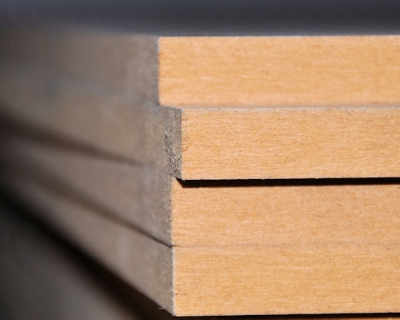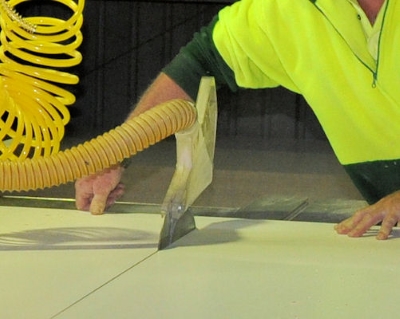Medium density fibreboard

Medium density fibreboard, or MDF, is manufactured in a similar way to particleboard, using the same sorts of glues and additives. The big difference is in the way the wood fibres are treated before they’re pressed.
The wood is heated under pressure until the fibres and natural glues that bond them together soften, and then the fibres are rubbed apart to produce a much finer material for pressing.
The end result is a sheet with a higher density than particleboard and an even consistency right through to the centre. This allows MDF to be machined or routered to a profile on the face and edge without the fibres pulling out or chipping. It can also be sanded and painted to give a smooth finish.
There are two types of MDF:
- Standard MDF, which uses urea formaldehyde as the adhesive
- Moisture resistant MDF, which uses melamine and urea formaldehyde.
Advantages

MDF doesn’t warp or twist under normal conditions. It can be drilled, sanded, routed and re-sawn without splintering or chipping. Because of its consistent density, its face and edges can be machined to a profile, without the need for a separate edge strip.
It can also be painted, stained or clear finished, and is often used for high-gloss enamel-finished items.
In addition to being suitable for painting, MDF is also an excellent substrate for laminates, including wood veneers, vinyls and melamine. It can also be used in curved work, such as archways and curved panels.
Disadvantages
Like particleboard, MDF does not tolerate wet conditions. Moisture-resistant boards are able to cope with areas of high humidity and occasional wetting, but they still need to be protected from prolonged contact with moisture. MDF will also swell and shrink in response to changes in humidity.